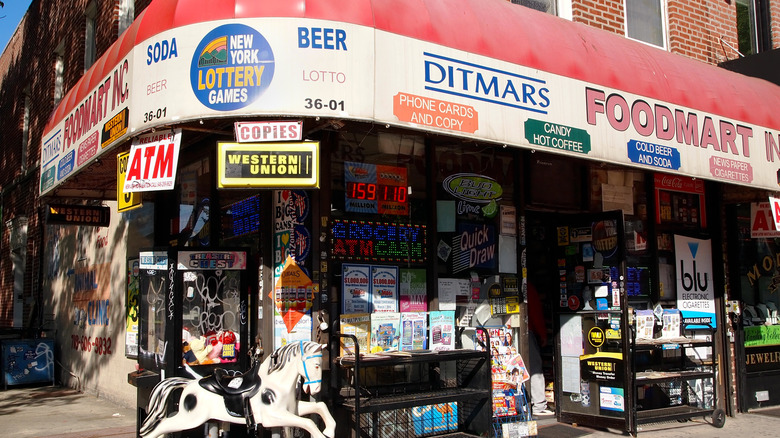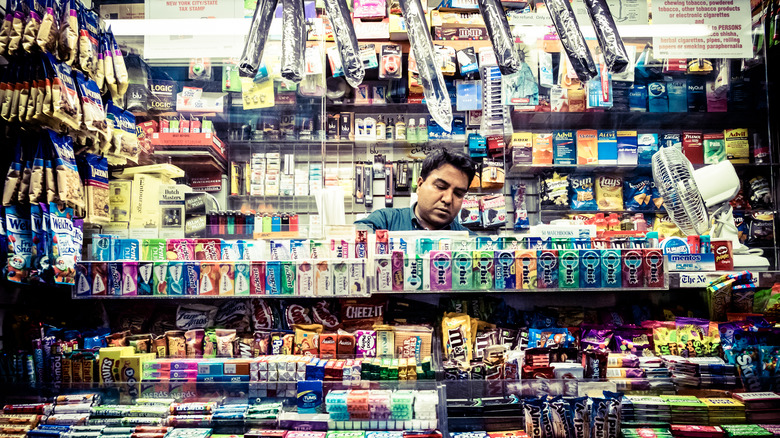How Bodegas Became A Symbol Of New York Culture
"New York is to have a bodega," announced The Sun on December 10, 1902. The article described a bodega as a kind of Spanish "barroom" — while other translations define it as a "storeroom" — both of which are different from a modern New York City bodega, a bustling corner convenience store. But this was the city's first foray into the bodega business: the beginning of a beautiful relationship between these iconic corner stores and the communities they sustain.
Today, the exact number of bodegas across NYC's five boroughs is unknown; though in recent years estimates have ranged from 7,000 to nearly 13,000. No matter the number, bodegas have become ubiquitous in New York City, and important for the city's food shopping and culture. "Corner stores play a huge part in anyone's life living in New York. If you're not cool with your corner store guy, you're not from New York," said Abdul Sulaimani whose father owns Yafa Newsstand & Deli in Brooklyn (via NPR).
Bodegas have evolved over the past hundred years to become New York City corner icons and shopping havens for those looking to pick up something quick and avoid the supermarket. Part of the bodega's appeal is that staples like milk and eggs are cheap, as well as the fact that you can get a chopped cheese sandwich late at night. If you're lucky you might catch a sighting of a famous bodega cat.
Bodegas are an important part of NYC communities
After World War II, the Puerto Rican population in New York City expanded from 60,000 to about 600,000 by 1960, and the bodegas helped to fill the needs of this growing community. Many sold necessary ingredients for traditional Puerto Rican foods as well as everyday items like toilet paper. Bodegas are common in many Latin American communities, said cofounder and spokesman for the United Bodegas of America, Fernando Mateo. "Bodegas serve people who are used to that service in their native countries," Mateo said (via City Signal). Allowing people to make the dishes they remembered from home created an important tie to their past.
Bodegas have become a part of New York City neighborhood culture, as, chances are, not only do most New Yorkers know their local bodega owner, bodega owners also know their customers, often at a more intimate level than a traditional cash exchange. "You know the people. When you work for a corporation, it's just about in and out. We don't do that. We talk to our community about what's going on," Shoyel Abdul who owns L.E.S. Mini Mart in Manhattan told NPR. Similarly, Merquis Garcia, owner of A&M Supermarket in the Bronx, describes himself as a counselor of sorts and says customers also come to him, a well-known face in the neighborhood, with their problems.

